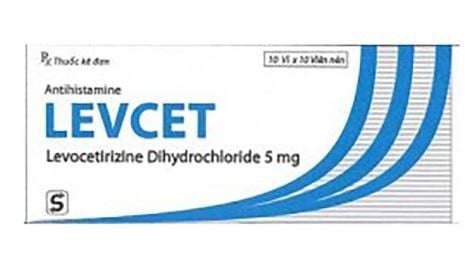This is an automatically translated article.
Milk allergy is one of the common phenomena in children and can cause a number of skin, respiratory, and digestive problems. Even in some children using milk for the first time can cause anaphylactic shock, which can be life-threatening.
1. Milk allergy in children
Milk protein allergy is a common immune response of the child's body to protein components in milk and dairy products, especially cow's milk. This type of allergy has the highest incidence of food allergies, accounting for about 2-7.5% of children in this age group. Milk protein allergy usually occurs minutes to hours after the child consumes milk or milk products, in most cases, the allergy stops before the child is 3 years old.
Some risk factors for prolonging milk allergy in children include:
Family history of allergies Allergies to many foods Having certain allergies such as allergic rhinitis, asthma bronchial, urticaria,... Allergic to milk casein protein and in low doses Co-sensitization to air and food allergens are uncommon. SEE ALSO: What to do when a child is allergic to cow's milk protein?
2. How to test for milk allergens?
The diagnosis of milk allergy will be based on clinical symptoms as well as family history, combined with other allergy testing. Therefore, the doctor will first take a family history such as the child's personal history and the types of milk that the child is using, when the symptoms appeared and the triggers. This information is very important in making a diagnosis. The doctor will then examine the skin, respiratory system, and digestive system, as these are the organs most affected by milk allergy.
After the clinical examination, the doctor will order some laboratory tests for the child. Types of allergy tests include:
Milk skin prick test: This is a basic diagnostic method to help assess a child's allergy to milk allergens. Specific IgE blood test for cow's milk proteins Exclusion test: follow a dairy-free diet for 2-4 weeks Milk protein challenge test: reintroduce milk MORE: Baby with cow's milk allergy should What milk to use instead?

Xét nghiệm máu IgE đặc hiệu là một trong các xét nghiệm dị nguyên sữa
3. When should babies be tested for milk allergens?
Milk allergy will cause allergies and affect the health of children. Therefore, parents should take their children to medical facilities for testing when children have signs of allergy to milk as follows:
3.1 Signs in the digestive tract Children with milk allergy will have up to 50 -60% of cases have digestive disorders including:
Gastrointestinal disorders: children have frequent bowel movements, loose stools may contain blood or not, children may also be constipated. In addition, the phenomenon of lactose intolerance has accompanying manifestations such as immediate diarrhea, red sour stools and anal skin ulcers. It is important to distinguish lactose intolerance from dysentery. Vomiting: usually occurs soon after feeding or a few hours after feeding. In the case of children vomiting that is not related to meals, it may be a sign of physiological or pathological reflux. Children eat less: children have anorexia and often cry, the cause comes from children having flatulence, indigestion, and bloating. 3.2 Skin signs Skin signs account for about 50-70% of cases of milk protein allergy:
Rash: a child with a protein allergy will show symptoms such as red rash, hives, eczema a few minutes to an hour after the baby drinks milk. Swelling of the lips and face: is one of the signs to recognize that a child has a milk protein allergy. Swelling of the lips and face is often accompanied by gastrointestinal symptoms. 3.3 Respiratory signs Respiratory manifestations account for about 20-30% of milk protein allergy cases. And it can happen right after the baby uses milk or dairy products, or manifest after 1 week.
Wheezing: children appear signs such as difficulty breathing, wheezing and accompanied by mucus in the throat and nose after using milk, this may be a sign of a reaction to allergens in milk. Weight loss or no weight gain: Most babies will double their weight by 6 months and triple it by 12 months. However, if the child does not gain weight, is slow to grow, and has symptoms such as vomiting and diarrhea, it is possible that the child has a milk protein allergy.

Thở khò khè là một trong các dấu hiệu dị ứng đạm sữa ở đường hô hấp
In summary, milk protein allergy is a common immune response of the child's body to protein components in milk and dairy products, especially cow's milk. This is the most common type of food allergy. Allergic reactions can affect the health of children, especially the digestive tract, respiratory tract and skin, and some children may even go into anaphylactic shock the first time they use milk. Therefore, parents should take their children to medical facilities to be tested for milk allergy to prevent dangerous complications.
With many years of experience in examining and treating diseases in children, now the Pediatrics Department at Vinmec International General Hospital has become one of the major health care centers, capable of examining , screening and treatment of many specialized diseases in children. Therefore, if a child shows signs of a milk allergy, parents can take the child to Vinmec International General Hospital for examination, allergy testing and support and advice from doctors.
Please dial HOTLINE for more information or register for an appointment HERE. Download MyVinmec app to make appointments faster and to manage your bookings easily.













